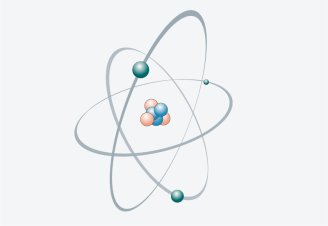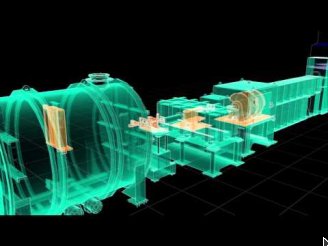Copyright 2012 neutronsources.org | All rights reserved. | Powered by FRM II | Imprint / Privacy Policy

Neutrons exist everywhere in nature.
Together with protons, neutrons form the nucleus of most atoms – the hydrogen nucleus is the only one that does not contain neutrons. Neutrons are therefore part of all the matter that surrounds us.
Neutrons have properties that make them particularly useful to study a number of things. Neutrons do not possess any electric charge, they are neutral. The neutron’s spin is ½, their mass 1,67 × 10-24 grammes.
Neutrons are stable inside the nucleus; outside of it, they decay with a lifetime of about 15 minutes (886 seconds); this is quite long for a fundamental particle.
They can be released from the nucleus by a process called fission, as happens in a nuclear reactor or by firing a high-energy beam of protons into a target of neutron-rich element such as lead – a process called spallation.
Neutrons as probes
For research purposes, neutrons are released from their role as a component part of matter, and are used as probes with which researchers can look inside a very wide variety of materials. In a typical neutron experiment, a neutron beam passes through the object under investigation. The experimenters then observe how the characteristics of the beam have been changed by its interaction with the sample. By doing this, they can obtain information about the internal structure or composition of the sample.
When beams of neutrons are used to probe small samples of materials they have the power to reveal what cannot be seen using other types of radiation. Neutrons appear to behave either as particles or as waves or as microscopic magnetic dipoles. It is these specific properties which enable them to yield information which is often impossible to obtain using other techniques.
Beams of neutrons can be scattered by materials. If the neutron energy is chosen correctly, then their wavelength is similar to the distances between atoms or molecules, and the pattern of scattered neutrons can be used to produce an image of the atomic structure.
Further reading
You can find educational material on neutron scattering, such as brochures, lectures notes, and applications, here.
